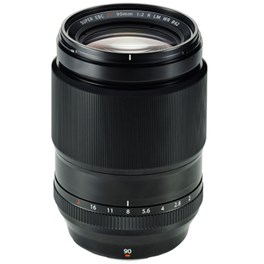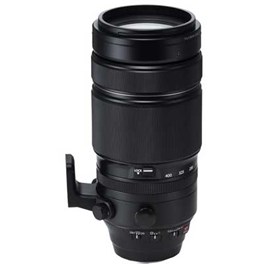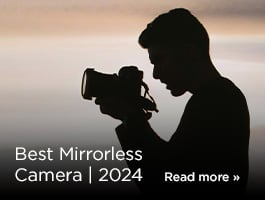
One of the best assets of the Fujifilm X mirrorless system is the lenses. The best Fujifilm lenses are some of the most exciting lenses in all of photography. Full of character, these lenses create crisp, punchy images that make the most of Fujifilm cameras’ class-leading colour science. They’re known especially for their ability to create beautiful bokeh in the defocused areas of images.
We’ve aimed to produce a practical list of the best Fujifilm lenses that’s useful to as many people as possible. So, rather than just listing the top-end, most expensive optics that Fujifilm produces, we’ve divided these lenses up into different genres of shooting, including landscape, travel, wildlife, portraits, video and more. We’ve also taken price into account when making our picks, aiming to pick lenses that are priced for enthusiasts rather than top-end professionals. And if they’re not affordable enough, we have added more budget-friendly alternatives for many of our picks, as well as premium alternatives for those budgets are a little bigger.
Note that in this guide we’re just dealing with Fujifilm’s APS-C mirrorless X system, not the medium format GFX cameras and lenses. If you’re interested in a new Fujifilm camera as well as a lens, check out our guide to the best mirrorless cameras, which includes several great Fujifilm options.
Best Fujifilm portrait lens:
|
Pros:
Cons:
|
|
Give Fujifilm portrait photographers a chance, and they will talk your ear off about the Fujifilm 90mm f2 R LM WR X. It is an absolutely cracking lens, producing brilliantly characterful images when shooting wide open with its f2 aperture. The rounded bokeh balls you get in the defocused areas of the frame are absolutely perfect — exactly what you want — and the in-focus subjects are rendered with crisp sharpness and exact details.
It’s quite a tight lens, its focal length running to an equivalent of 135mm when mounted to a Fujifilm X camera with its APS-C sensor. This is brilliant for single-person portraiture, particularly headshots, as it gives you a nice and tight field of view for isolating and emphasising your subject’s facial features. You’ll probably also be able to manage small groups of two or three, but if you regularly shoot large group portraits, or you prefer to shoot environmental portraits that incorporate more of a subject’s surroundings, it would be a good idea to use a shorter focal length.
One such lens is the Viltrox AF 75mm f1.2 XF, which is also a more affordable option for shooters on a budget. With an extra-large f1.2 maximum aperture, it’s great for separating subject and background, and the 112.5mm equivalent focal length is well-suited to creating flattering portraits. Or, if you’ve got a little more room in the budget, consider the Fujifilm XF 56mm f1.2 APD, Fujifilm’s premium portrait lens with an apodisation filter designed to produce extra-silky-smooth bokeh.
Best Fujifilm lens for wildlife:
|
Pros:
Cons:
|
|
Putting impressive telephoto power in your hands, the Fujifilm 100-400mm f4.5-5.6 R LM OIS WR is a beast of a wildlife lens. As well as delivering an equivalent focal range of 152-609mm, it’s also weather-sealed for extensive outdoor use, meaning you don’t have to let a little rain stop your pursuit of wildlife shots. It’s also an excellent one for autofocus, with its AF system powered by two linear motors. A handy focus limiter function lets you restrict the focal distance if you know roughly where your subject is going to appear — this can be hugely useful for reducing focus-point hunting.
You do have to plan around the f4.5-5.6 variable maximum aperture which can be restrictive when the light gets low, especially given that wildlife photography requires fast shutter speed. It’s also, expectedly, a big and fairly heavy lens.
If you’ve got a bit more budget and want more telephoto reach, the Fujifilm XF 150-600mm f5.6-8 R LM OIS WR is an excellent option, working out to an incredible equivalent range of 229-914mm. Alternatively, if budgets are tight, you can shave a little money away with the excellent Sigma 100-400mm F5-6.3 DG DN OS Contemporary Lens for Fujifilm X, which delivers brilliant sharpness in a lightweight build — though with a narrower variable aperture.
Best Fujifilm lens for landscapes:
|
Pros:
Cons:
|
|
The original version of Fujifilm’s XF 10-24mm f4 lens was a brilliant optical performer, but was held back from being truly useful to landscape photographers for one crucial reason — it wasn’t weather sealed. This was happily corrected for the upgrade, the Fujifilm XF 10-24mm f4 R OIS WR, a superb lens that produces suitably characterful and dramatic wide-angle images for landscape shooters. Producing an equivalent focal length of 15-36mm, it provides a decent level of zooming latitude for fine-tuning your compositions, and it can also take circular front-mounted filters via its 72mm thread.
The lens is unsurprisingly at its sharpest when you stop down. It exhibits a little corner softness at wider apertures. This isn’t necessarily a bad thing, as it can introduce some distinctive character to images, but it’s worth being aware of.
If your budget can go a bit further, consider the Fujifilm XF 8-16mm f2.8 R LM WR, a gorgeous lens that gives you even more play at the wide end for more expansive compositions. Or, if money is tight, the Samyang AF 12mm f2 Lens for Fujifilm X is a very affordable lens that provides a beautifully wide 99.1° field of view.
Best Fujifilm lens for video:
|
Pros:
Cons:
|
|
A capable constant-aperture lens can be a videographer’s best friend, allowing for versatile, all-purpose shooting in a variety of situations. The Fujifilm XF 16-80mm f4 R OIS WR is our top pick for Fujifilm users — it’s an incredible all-rounder, and its sophisticated optical image stabilisation system provides a brilliant level of compensation for camera-shake for handheld shooting. It’s not quite up to the level of a handheld gimbal, which many video shooters will be using, but it’s a great asset to have for those who don’t want to use a gimbal.
Another big feather in this lens’ cap is the fact that its autofocusing system is near-silent, meaning the audio in your videos won’t be compromised by the sound of whirring motors. This lens produces an equivalent range of 24-120mm; if you think you’ll want something wider, it’s worth instead considering our old friend the XF 10-24mm f4 R OIS WR from our landscape section. This capable lens also boasts sophisticated image stabilisation — not all that necessary for landscape shooting, but great for video.
Best Fujifilm lens for travel:
|
Pros:
Cons:
|
Aperture: f2.8 constant Focal Length: 16-55mm (equivalent to 24-84mm) Features: Linear motor for fast autofocus and fluorine coating for durability Autofocus: High-speed focusing as fast as 0.02 seconds Build Quality: Weather-sealed and lightweight (410g) |
The Fujifilm XF 16-55mm f2.8 R LM WR II is a stellar choice for travel photography, blending exceptional image quality with versatility. Covering an equivalent focal range of 24-84mm, this lens delivers sharpness and detail throughout the zoom range, making it a dependable partner for capturing everything from landscapes to street scenes. Its consistent f2.8 aperture is ideal for shooting in low-light environments or creating subject-background separation, adding depth and vibrance to your travel shots.
While its 655g weight might make it heavier than other options, the trade-off is its rugged build and weather-resistant sealing, ensuring it can handle the demands of unpredictable travel conditions. The absence of optical stabilisation might be noticeable on older Fujifilm bodies without in-body stabilisation, but modern cameras make this less of an issue.
If you’re travelling light, a prime lens is a worthwhile alternative. For an affordable alternative, try the Fujifilm XF 35mm f2 R WR, a standard prime delivering an equivalent focal length of 53mm for naturalistic-looking images. Or, if your budget is even tighter, there’s the Fujifilm XC 35mm f2, a super-lightweight lens that still delivers impressive image quality and beautiful bokeh. But for those who value flexibility, the XF 16-55mm f2.8 R LM WR II is hard to beat.
Best budget Fujifilm lens:
|
Pros:
Cons:
|
|
Finally, if you’re looking for the most affordable possible Fujifilm lens that will still deliver great image quality, we’d recommend the TTArtisan 50mm f1.2. With an equivalent focal length of 75mm, it produces a fairly short telephoto field of view that puts portraiture in play, but is also pretty handy for street and day-to-day photography. With a wide f1.2 maximum aperture, it gives you plenty of latitude in low light, and it offers a pretty slick handling experience.
This is a manual focus-only lens. This isn’t necessarily a deal-breaker, and can be especially good for photography students who want to better understand the principles behind image-making — however, it’s definitely something to be aware of going in. TTArtisan also offers a number of other budget-friendly Fujifilm lenses at different focal lengths that are manual-only — if you’re on a budget but can’t live without autofocus, try the Fujifilm XC 35mm f2, which is a capable and likeable little lens for general-purpose photography.

FAQs
What are the best lenses for Fujifilm cameras?
Fujifilm offers a wide variety of lenses to suit different needs, including options for landscape, portrait, travel, wildlife, and macro photography. The "XF" range typically features premium optics and build quality, while the "XC" range provides more affordable and lightweight alternatives.
Are Fujifilm lenses compatible with other camera brands?
Fujifilm X-mount lenses are specifically designed for Fujifilm cameras with APS-C sensors. Adapters are available to mount Fujifilm lenses on other brands, but functionality such as autofocus or aperture control may be limited or absent.
What makes Fujifilm lenses unique?
Fujifilm lenses are known for their exceptional optical quality, compact designs, and advanced coatings to reduce flare and ghosting. Many are weather-sealed, making them ideal for outdoor photography in challenging conditions.
Are Fujifilm lenses good for video?
Yes, Fujifilm lenses are excellent for video, especially those with linear motors for silent autofocus and optical stabilisation. Certain models also offer smooth aperture rings for precise exposure control during filming.
Why are some Fujifilm lenses more expensive than others?
Fujifilm's pricier lenses often feature advanced optics, wider apertures, weather sealing, and premium build quality, catering to professional photographers. More affordable options may lack features like stabilisation or weather resistance but still deliver excellent image quality.
How do we decide?
Our in-house photography experts, store staff and partners all work collaboratively to pour over our guides and tips articles. We also consider emerging trends and customer feedback to make sure our guides are always up-to-date and reflective of what people are truly looking for. By curating only the best products, our guides provide trustworthy recommendations, making it easier for customers to make informed choices with confidence.
If you would like more advice on any purchase our contact centre staff are here to help. Alternatively, you can reach us via email or social media. And don't forget. If you were to purchase anything based on our recommendations you'll be covered by our full returns policy













